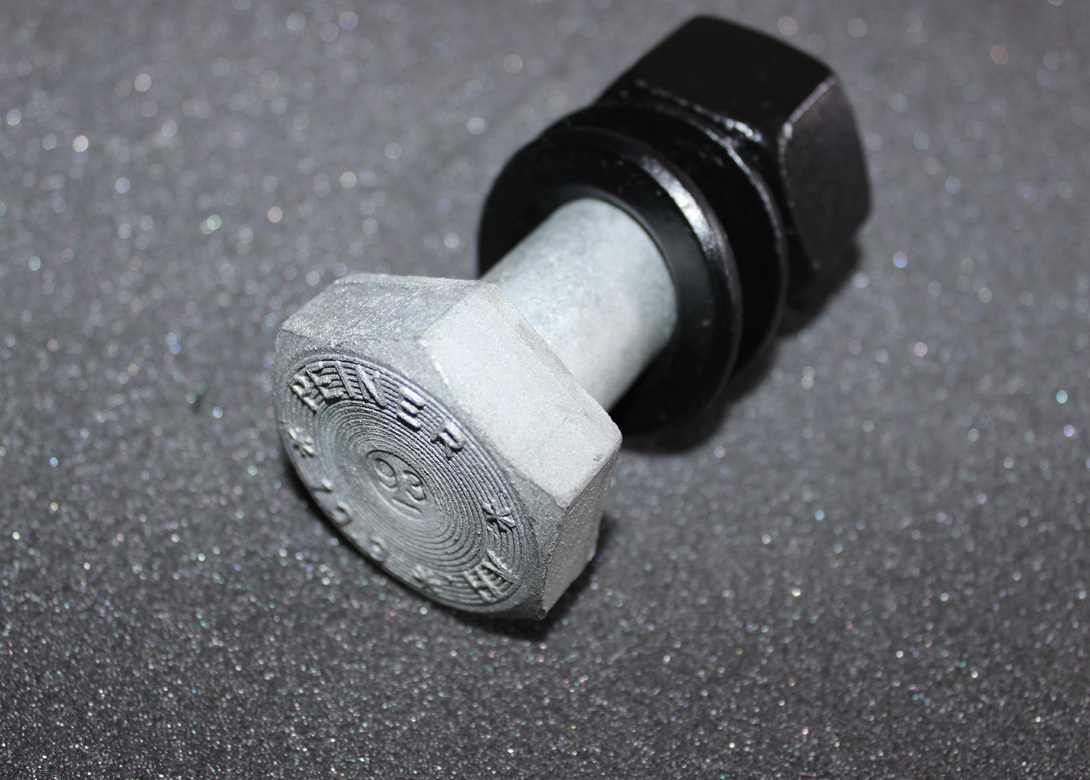
Screwed fasteners are one of the most important components in wind energy units, bridges and steel construction. Alongside diverse factors such as material and tools, varying weather conditions also have an important influence on coefficients of friction and therefore the screwed fastening as a whole.
There is currently a range of different screwed fastening in use: ISO bolt sets, friction grip bolt sets and bolt sets with calibrated pretension – all of which consist of a bolt, at least one washer and a nut. They are often made of high-tensile material.
The coefficient of friction is a key element of a secure screwed fastener. This value describes the ratio of pretension and torque and is determined by two factors – thread friction and head friction. The load pressure that affects the surfaces is the pretension, which is also responsible for the elongation of the bolt and the corresponding spring effect. Torque, on the other hand, affects the surface of the thread and the contact area, it is divided into three partial torques – thread torque, head friction and the part translated directly into pretension. Consequently, the pretension ultimately achieved with prescribed torque is dependent on the coefficient of friction.
The friction µges and k-factor are influenced by numerous different factors, such as material pairing, surface, lubrication or wear. However, ambient temperature, humidity, and rain, also have a considerable influence on screwed fastenings. It is not only elastic deformation that occurs here, in the worst case this may result in sheared bolts or failure to achieve the necessary pretension. This leads to halts in construction with extensive costs and time delays due to repair work or the replacement of fittings.
That is why DÖRKEN and Peiner Umformtechnik decided to work together on a solution. Peiner is a leading supplier of fasteners for wind energy units, and steel construction, and produces calibrated pretension bolt sets, as well as friction grip bolt sets in the dimensions M12 to M36.
“The challenge in our joint project lay in equipping the standard hot dip galvanised bolt with washer and nut with an additional top coat – meaning neither rain nor sunshine impact the stability of the fastening,” explains Christos Tselebidis, vice-president sales industrial coatings at Dörken. “To achieve this, over a period of nearly six months we conducted a number of experiments and extensive testing with our zinc flake top coats, ultimately finding a top coat as a solution.”
Whilst the hot dip galvanisation is the base coat protecting the screwed fastening against corrosion, the set coefficient of friction of the zinc flake top coat ensures the secure fastening of the nut, without removing any of the hot-dip galvanised protective layer.
Alongside the extremely demanding laboratory test, the coating combinations identified have also proved their ability in various field trials. “The results are impressive – no malfunctions have occurred in the nearly 3 million bolt sets delivered and installed,” says Valerij Schram, head of application engineering for steel construction and wind energy at Peiner Umformtechnik. “The cooperation between Dörken and Peiner has not only resolved a real problem, it also ensured that a previously unachieved level of process reliability could be reached on construction sites.”

Having spent a decade in the fastener industry experiencing every facet – from steel mills, fastener manufacturers, wholesalers, distributors, as well as machinery builders and plating + coating companies, Claire has developed an in-depth knowledge of all things fasteners.
Alongside visiting numerous companies, exhibitions and conferences around the world, Claire has also interviewed high profile figures – focusing on key topics impacting the sector and making sure readers stay up to date with the latest developments within the industry.
Don't have an account? Sign Up
Signing up to Fastener + Fixing Magazine enables you to manage your account details.